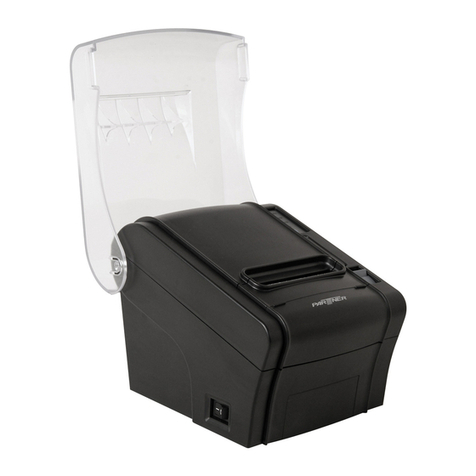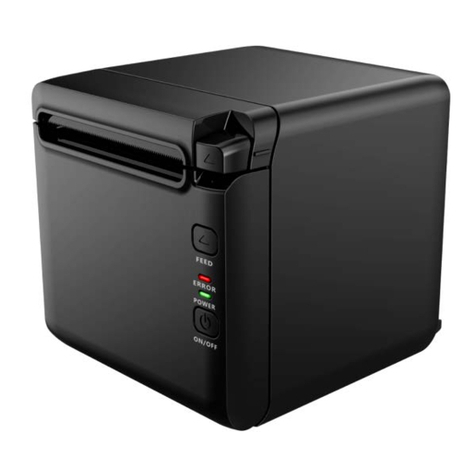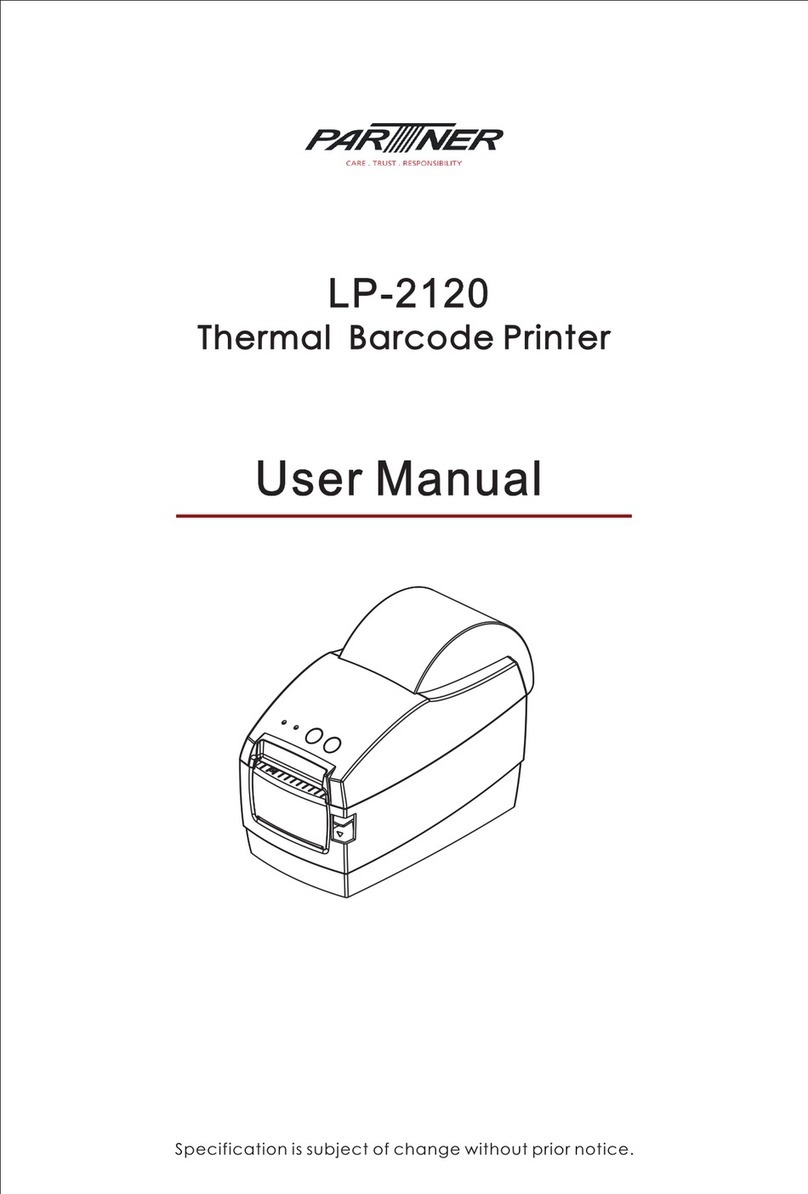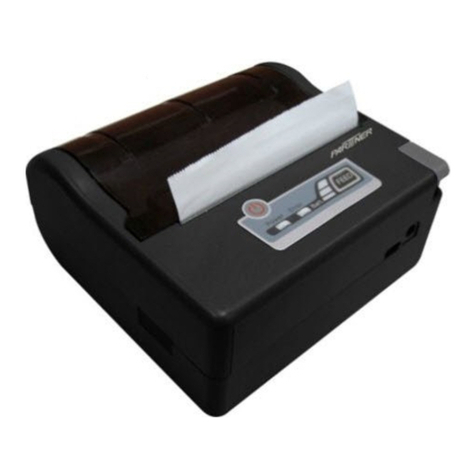
1. General Specifications
1.1 Printing Specifications
1) Printing method: Thermal line printing
2) Dot density: 180dpi x 180dpi
203dpi x 203dpi
3) Printing direction: Unidirectional with friction feed
4) Printing width: 72mm(2.83"), 576 dot positions (203dpi)
72.2mm(2.84"), 512 dot positions (180dpi)
80mm(3.15"), 640 dot positions (203dpi)
5) Characters per line(default): Font A: 42
Font B: 56
6) Printing speed: High speed mode: (180dpi x 180dpi)
37.8lines/second maximum
(1/6inch feed) (at 24V, 20℃)
Approximately 200mm/sec maximum
(approximately 6.3inchs/sec maximum)
☞NOTE: Speeds are switched depending on the applied voltage to the printer and head temperature
conditions automatically.
☞NOTE: There may be variations in printing after switching the mode of the printing speed. To prevent this
for logo printing with ESC* command, using a downloaded bit image is recommended. Change in
printing speed does not occur during down loaded bit image printing.
7) Line spacing (default): 1/6 inch (4.23mm)
Programmable by control command.





































